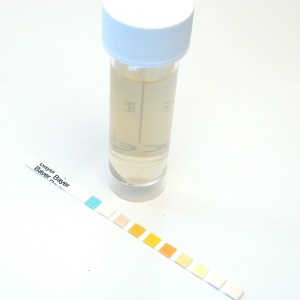GPs ‘should refer patients with both non-visible and visible haematuria’

GPs should refer patients with non-visible as well as visible haematuria for cancer investigation, once other causes have been excluded, according to diagnostics experts.
The team, led by Professor Willie Hamilton, professor of primary care diagnostics at the University of Exeter, found both types increase the risk of bladder cancer beyond that given by other clinical features.
The researchers looked at data from the Clinical Practice Research Datalink (CPRD) for 4,915 cases of bladder cancer matched with 21,718 control cases.
Cases had one of 20 CPRD bladder cancer codes, with data reported over a nine-year period. Uncoded data were found by searching supplementary notes for ‘blood in urine’ and ‘haematuria’ and categorised according to whether haematuria was present or absent and the type of haematuria (visible or nonvisible).
The results showed that the positive predictive value (PPV) of non-visible haematuria was 1.6% in those aged 60 years or older, and 0.8% in 40–59-year-olds. The PPV of visible haematuria was 2.8% and 1.2% for the same age groups, respectively.
The researchers therefore concluded both non-visible and visible haematuria are associated with bladder cancer, although the visible form carries twice the risk of cancer compared with non-visible haematuria.
They added that ‘referral is currently recommended and now has an underpinning evidence base’.
Pulse July survey
Take our July 2025 survey to potentially win £1.000 worth of tokens

Visit Pulse Reference for details on 140 symptoms, including easily searchable symptoms and categories, offering you a free platform to check symptoms and receive potential diagnoses during consultations.











